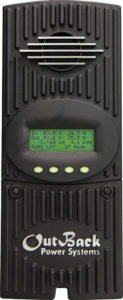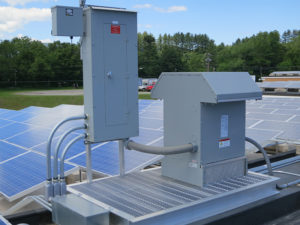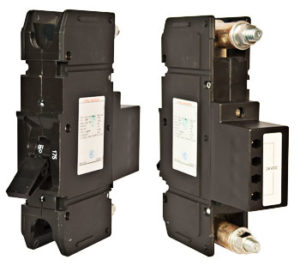
Energy System Components | Vermont
Many components must work properly together in order to assemble a fully functioning and reliable renewable energy system.
While it is perfectly acceptable to mix and match components from various manufacturers in order to meet specific application or budgetary requirements, there are times when matching components from a single manufacturer can simplify system installation, programming, and troubleshooting.
Your RES-TEC design team can help you wade through the many different manufacturers and products available in order to tailor a system to meet your specific needs.
The information below is designed to give you a basic understanding of how some of the components used in renewable energy systems function in relation to one another.
Inverters
 An inverter is an electrical component that changes (or inverts) direct current (DC) into alternating current (AC). Most renewable energy generators such as photovoltaic panels, wind turbines, micro-hydro turbines, and battery banks produce DC. Most household appliances run only on AC.
An inverter is an electrical component that changes (or inverts) direct current (DC) into alternating current (AC). Most renewable energy generators such as photovoltaic panels, wind turbines, micro-hydro turbines, and battery banks produce DC. Most household appliances run only on AC.
While there are many manufacturers making inverters of every conceivable size, they all fall into one of two categories; grid-tied inverters, or stand-alone inverters. Grid-tie inverters are designed to take the energy from a renewable energy source and change it to AC power which will exactly match the power of the utility grid.
The exact matching of voltage and frequency is necessary in order to be able to sell power back to the utility under a net-metering agreement. Grid-tie inverters also have circuitry which prevents them from producing power in the event of an electrical outage, protecting anyone working on downstream electrical wiring.
Stand-alone inverters are really two components in one package. Under normal conditions they take the DC from a battery bank and invert it to AC to power household loads. Most modern stand-alone inverters also incorporate a rectifier which will convert AC power from a generator into DC power for the purpose of battery charging.
Charge Controllers
 As you might have guessed from the name, a charge controller performs the battery charging function of power from a DC renewable energy source. Modern charge controllers will accept a wide range of input voltage from the renewable energy source and efficiently charge the system battery bank using a process called maximum power point tracking (MPPT).
As you might have guessed from the name, a charge controller performs the battery charging function of power from a DC renewable energy source. Modern charge controllers will accept a wide range of input voltage from the renewable energy source and efficiently charge the system battery bank using a process called maximum power point tracking (MPPT).
MPPT means that the charge controller will determine the maximum power available (the point where the product of varying voltage and current are at their maximum) and supply this power to the batteries. Charge controllers are only used in systems incorporating batteries.
Combiner Boxes
 Combiner boxes are used in photovoltaic systems in order to join the multiple series strings of PV modules into a single circuit.
Combiner boxes are used in photovoltaic systems in order to join the multiple series strings of PV modules into a single circuit.
Normally, the combiner box is installed very near the PhotoVoltaic array and eliminates the need to run many wires from the array to the inverter.
Depending upon system design requirements, combiner boxes can also incorporate over-current protection such as fuses or circuit breakers and lightning protection.
Transformers
 Transformers, a component built into many inverters, are normally added to a stand-alone renewable energy system between the inverter and the AC load panel. A transformer transfers and multiplies current in one circuit to another circuit by varying the number of windings and the wiring method, to meet specific system requirements.
Transformers, a component built into many inverters, are normally added to a stand-alone renewable energy system between the inverter and the AC load panel. A transformer transfers and multiplies current in one circuit to another circuit by varying the number of windings and the wiring method, to meet specific system requirements.
Transformers are used in stand-alone renewable energy systems to balance loads, split output, and equalize incoming power across multiple inverters for battery charging.
For example, with the use of a transformer it is possible to create two 120 volt circuits from a single 120 volt source in order to power equipment requiring 240 volt power (with half the amperage in each circuit). This can be a cost effective option allowing a single inverter to power small 240 volt loads (such as a well pump) without the increased expense of adding a second inverter to the system.
Over-current Protection
 Over-current protection devices are fuses and circuit breakers added to all electrical systems to prevent fire or equipment damage in the event of a short circuit.
Over-current protection devices are fuses and circuit breakers added to all electrical systems to prevent fire or equipment damage in the event of a short circuit.
The requirements for and sizing of over-current protection is detailed in the National Electric Code and is one of the most important aspects of a renewable energy system design.
Failure to properly size circuit over-current protection will at least lead to frustrating system performance and at worst, the possibility of electrocution or fire.
System Monitoring and Data Logging

 Many inverters and charge controllers now incorporate system monitoring and programming functions, and some even do basic performance data storage.
Many inverters and charge controllers now incorporate system monitoring and programming functions, and some even do basic performance data storage.
More advanced systems are available which allow the tying together of multiple system components for monitoring and programming from a single location.
Sophisticated data logging systems allow for remote system monitoring using a computer. Your RES-TEC design professional will fully explain your options with regard to monitoring and data collection in order to meet your specific requirements and desires.
Lightning and Surge Protection
 Lightning and surge protection devices are incorporated to protect equipment from transient voltage and lightning damage. RES-TEC incorporates lightning and surge protection in every system design and installation.
Lightning and surge protection devices are incorporated to protect equipment from transient voltage and lightning damage. RES-TEC incorporates lightning and surge protection in every system design and installation.
CONTACT US TO LEARN MORE TODAY
Please fill out and submit the Free Estimate Form to receive our competitive solar panel quote. Once we receive your request, we will contact you with further assistance.
We will not give or sell your information to any 3rd party.
